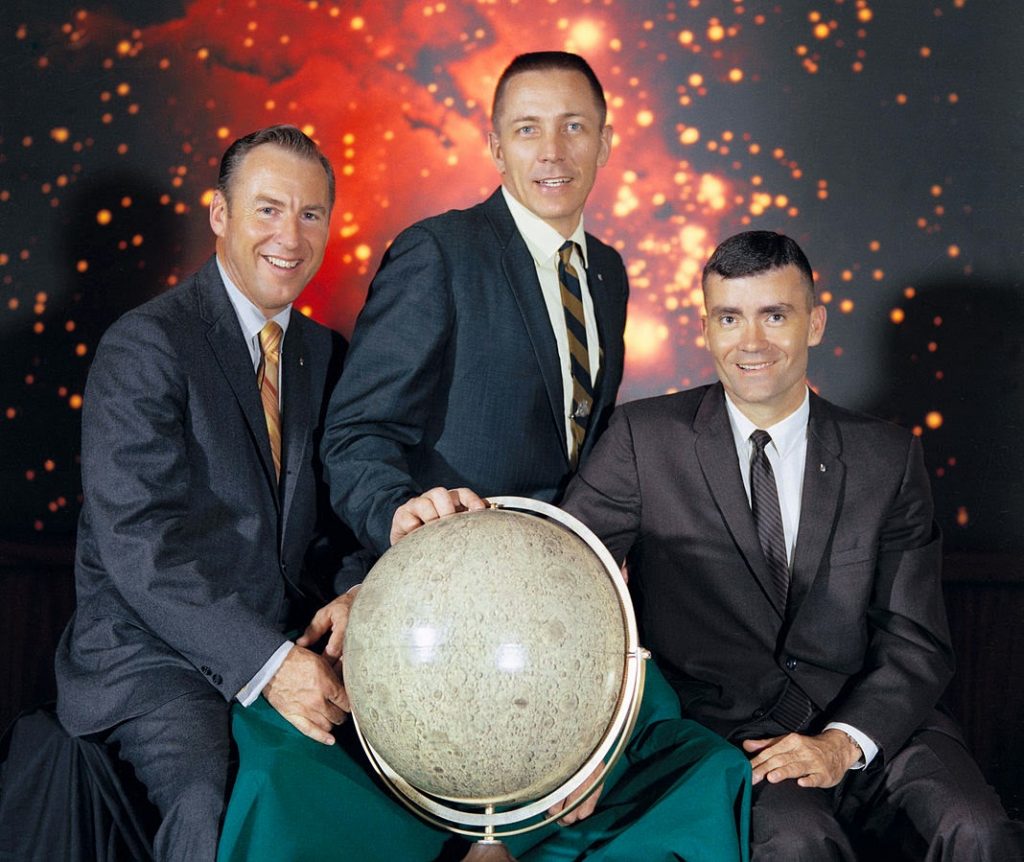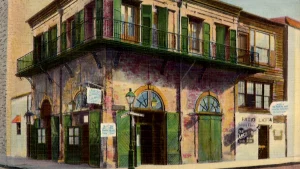The Apollo 13 lunar expedition suddenly turned into a survival mission when an explosion risked the lives of the crew, but turned out to be a successful failure. Before we examine the remarkable success accomplished by NASA, let’s travel back to the beginning of the mission. The main objective of Apollo 13 was to performed a lunar expedition. However, the crew encountered unexpected outcomes throughout the trip. The adventure of Apollo 13 lasted 143 hours and began on April 11, 1970, in Cape Kennedy, Florida. At 2:13 p.m., Apollo 13 was heading to the moon and its respective mission, when it experienced an explosion, then malfunctions, and subsequently doubts of ever making it back home alive.

During the first two days of the mission, the crew ran into minor surprises. But everything was looking as if Apollo 13 was the smoothest flight of NASA’s so far. A message came by Joe Kerwin, the capsule communicator, after 46 hours and 43 minutes, saying, “The spacecraft is in real good shape as far as we are concerned. We’re bored to tears down here.” That would be the last time somebody mentioned the word bored for a long time.1
At 55 hours and 46 minutes the crew finished a TV broadcast on how comfortable they were and that everything was fine in space. Nine minutes after the TV broadcast, a massive explosion occurred inside the spacecraft, causing a loss of electricity, light, and water. After the explosion, Apollo 13 was about 200,000 miles from Earth. The message was transmitted to Earth at 9:08 p.m., April 13, with the famous phrase, “Houston, we’ve had a problem.” James Lovell, the commander, told the ground that the main breaker was undervolted.2
The explosion left the crew in very bad shape, as they lost two of three fuel cells, which were the spacecraft’s prime source of electricity. Thirteen minutes after the explosion, Lovell saw through the window the final evidence of the catastrophe. “We are venting something out into the … into space,” Lovell reported to Houston. As Capcom Jack Lousma replied, “Roger, we copy you venting.” Lovell said, “It’s a gas of some sort.” The substance venting out was oxygen gas escaping at a high rate from the second and last oxygen tanks.3
An hour after the explosion, mission control sent a message, “we are now looking toward an alternative mission, swinging around the Moon and using the lunar module power systems because of the situation that has developed here this evening.” The crew was instructed to move to the lunar module, which would now be used as a lifeboat, and turn off completely the command module for re-entry. Meanwhile, the damaged Apollo 13 swung around the moon. The idea of landing on the moon was no longer an option for NASA. It was now a rescue mission.4
The crew and ground control were confronted with two problems to solve. First, getting the spacecraft and crew on the fastest route back home. Second, conserving consumables, power, oxygen, and water. The conservation of consumables began by shutting down the command module, which was only used as a bedroom. They also turned down all the systems in the lunar module, except for those required as life support, communication, and environmental control. For the first issue, after a great dealing of calculations and simulations at the Mission Control on Earth, they concluded that the Lunar Module’s engines could handle the requirements. Thus, the engines were fired to boost their speed another 860 fps, cutting the flight time by 10 hours.5

Finally, Apollo 13 rounded the Moon and began its journey back home. However, the problems were not entirely eradicated. The re-entry procedure required two more corrections. One was to align the spacecraft more towards the re-entry route. Moreover, the second issue was to fine tune the angle of entry, which had to be between the narrow range of 5.5 and 7.5 degrees. As the shuttle lacked power, the crew was forced to determine the altitude of the spacecraft manually. Normally the procedure would be routine; however, they experienced difficulties during the process, because the explosion had caused them to be surrounded with debris. Subsequently, they could not observe star sights, so the altitude of the shuttle became challenging to estimate. Mission control gave the answer to use the same strategy Apollo 8 used, in which the sun would be used as the alignment star.6
Just short of four hours before re-entry, Apollo 13 ejected the damaged Service Module. As the Service Module move away, Apollo 13 was able to see the damage. Two and a half hours before re-entry, Apollo 13 brought the command module back to life. As the system turned on, everyone aboard and at Mission Control, and around the world, had a sigh of relief. An hour later, the Lunar Module was also ejected. Mission control send a message, “Farewell, Aquarius, and we thank you.”6
The Apollo 13 Command Module carrying Jim Lovell, Fred Haise, and Jack Swigert, touch the Pacific Ocean on April 17, 1970 at 1:07 p.m. EST. Forty-five minutes later, USS Iwo Jima, recovery ship, came and brought the crew aboard. After 142 hours 54 minutes 41 seconds, Apollo 13 returned to Earth. The survival mission ended up being a successful failure, as nobody died and all came back to Earth alive from an almost impossible mission 200,000 miles from home.
- Office of Public Affairs, National Aeronautics and Space Administration, Apollo 13: “Houston we’ve got a problem,” Washington: Library Catalog, 1970. ↵
- Encyclopedia Britannica, s.v. “Apollo 13”, last modified September 7, 2017, https://www.britannica.com ↵
- Michael S. Rosenwald, “’Houston, we have a problem’: The amazing history of the iconic Apollo 13 misquote,” The Washington Post, April 2017, https://www.washingtonpost.com. ↵
- Nick Greene, “Apollo 13: A Mission in Trouble,” ThoughtCo., (2017). https://www.thoughtco.com. ↵
- Encyclopedia Britannica, s.v. “Apollo 13”, last modified September 7, 2017 https://www.britannica.com . ↵
- Nick Greene, “Apollo 13: A Mission in Trouble,” ThoughtCo., (2017). https://www.thoughtco.com. ↵
- Nick Greene, “Apollo 13: A Mission in Trouble,” ThoughtCo., (2017). https://www.thoughtco.com. ↵



65 comments
Andrea Tapia
I was so interested reading this article from start to finished, it was so well portrayed! I could not imagine how the astronauts must of felt in that exact moment knowing they could only pray for a miracle. I am glad all the crew members were able to make it back alive. Especially when all they had was themselves and space keeping them miles away from earth. The Apollo 13 mission was a failure, but a huge victory for the fact that everyone was safe and no lives were lost. This article allowed me to gain even more information about the event which I had only known the basics of what had happened. The astronauts were very brave for what they each risk going up to space for us to find more resources and maybe a new home if anything ever happens to earth.
Maria Jose Haile
I really enjoyed learning more about the Apollo 13 mission. The way it followed chronological order to tell the full mission was a great retelling and informative article. I loved the use of the words “successful failure” to both grab the readers attention and to tell the story of Apollo 13.
Cecilia Schneider
The event, itself, makes me tense to think of the life or death situation within outer space. I think what fascinates me the most is how these people worked together successfully under so much pressure. I am not sure that I could keep up with all of the weight of these men’s lives. The article outlined the event very clearly and, more importantly, maybe, kept me engaged and interested.
Anissa Navarro
This article was well written, I have never seen the movie but I was able to picture what had happened with your words. I have never knew such detail about the Apollo 13 mission, all I had known was that there were problems. I did think I saw some grammatical errors but nothing to bad because it was easily overlooked at first. Overall your article was good and told the story perfectly.
Eliza Merrion
I really enjoyed reading this article. All the information and research was very well done and it was clear to the reader what happened during the Apollo 13 mission. I especially liked how you began your article by stating the objective of the mission and the rest of your article followed a very good line of reasoning. The pictures you used, especially the one of all the astronauts, were very clear and well used. Overall it was a very good and informative article.
Lily Schow
This article is very well written. Space travel and aerospace engineering is a hard topic to write about I’m sure, and the author did a great job explaining what happened in terms everyone can understand. I have heard of Apollo 13 but never knew what actually happened. Apollo 13 is a good example because it shows that while we had conquered space travel once, it is always unpredictable and accidents are unexpected.
Velma Castellanos
This is a good article that I enjoyed reading. I have always heard about Apollo 13 but never really knew what it was. I found it interesting that they were able to overcome something so scary. This is terrifying to me to ne an astronaut because the outside is very vast and very few places that we can live in.
Dylan Miller
This article was a fantastic read! I always knew about what Apollo 13 was, and the famous line “Houston, we’ve had a problem”, but I never knew that it was a successful failure! To be fair I thought they were the ones to land on the moon, but to learn about how they successfully went around the moon and back to Earth with a badly damaged ship is way more interesting! The writing style kept me hooked the entire time!
Tavion Varela
I did not really know too much about the Apollo 13 Mission before I read this article. It is always interesting to read about missions to space because missions like those have to be so precise. Any miscalculation or wrong direction can turn the whole operation into a disaster and that was almost the case here. I wish I knew what it was like to be in those kind of high pressure moments. I am glad they made it back safe because it would be unfortunate for this story to have a bad ending like that.
Eric Hernandez
This was a really interesting read. I’ve learned a little about the Apollo 13 mission and also watched a movie on it, but as I read this I felt like I was actually witnessing this tragedy take place. This article was very well written by giving the reader a sense of what was going on in the space craft and back at NASA, Overall, it provided me with a clear story and most of all, wanting to learn more about the topic.